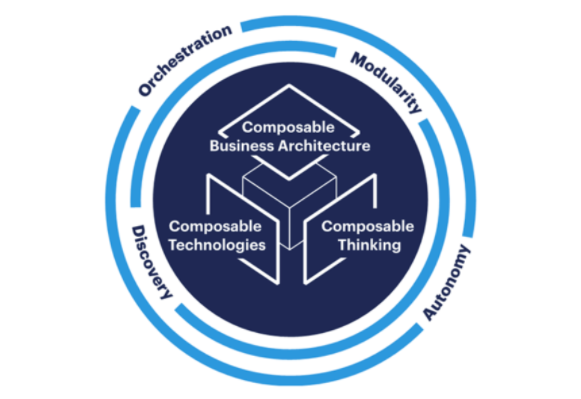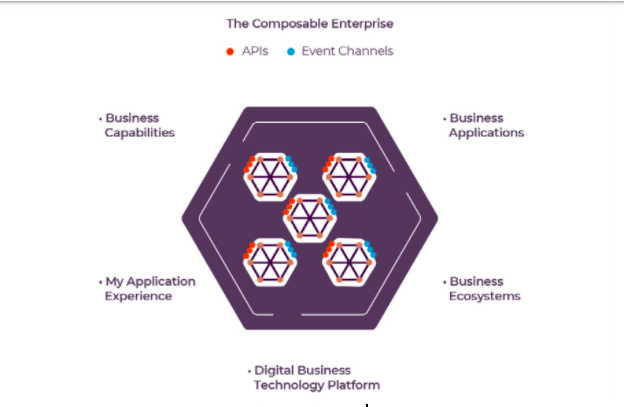What do you think the mantra for business success is?
I’ll give you two scenarios to choose from. One is related to an organisation that has built a legacy system and swears by it. It is flexible, but not to a degree that would benefit it in uncertain times, like the pandemic. And the next is enterprise modernisation where legacy systems undergo modernisation. This is where an organisation leaves its legacy architecture way behind. It wants to be innovative and cutting-edge and it is doing so through flexible APIs, through the cloud, through data analytics and even social media.
Out of these two, which organisation do you think would be able to adapt to changing business needs, evolving consumer trends and diversified market demands?
The right answer is the organisation with more flexibility. It is because flexibility paves way for resilience and agility, which is the mantra for business success in the present and it most likely would stay that way in the future.
This blog is dedicated to the flexible, resilient and agile way of conducting business and that is referred to as the composable enterprise. So, let’s find out what these business models are all about and why it is becoming all the rage.
Understanding a Composable Enterprise

Have you ever played lego as a child? Building something out of small and individual blocks is the goal. In the game, you can easily transform your output by changing the placement of certain blocks, adding a few more to it or by simply eliminating some. It seems pretty convenient, doesn’t it?
Now, take the lego principle and move it towards the business front, and you will have a broad interpretation of the composable business model, wherein the blocks symbolise Packaged Business Capabilities (PBC), making an organisation highly adaptable to change by being its building blocks. However, unlike the lego, there are a few more aspects that play a role than just blocks.
So, what is a composable enterprise exactly? In a more fine-tuned definition, a composable business helps in understanding and grasping technological solutions and make them better suited to the constantly evolving business requirements. This is done using two things;
- One is the broken down pieces of bigger and more complex business components;
- And second is an API or APIs that would provide connectivity to these broken-down components, thus making them composable.
What happens then?
The answer is more innovation in the long term. You must be wondering how and the answer lies in those smaller pieces. The thing is when you break down a bigger component into smaller pieces, there is a high likelihood that it would not be dependent on one technology. Since those pieces are going to be connected with APIs with each other, they can easily be independent. Consequently, your architecture becomes collaborative.
To spur innovation, you need to be proactive. And the composable business is just that. It makes you adapt to change pretty quickly, so that you can build and deploy at a much faster pace. The APIs and cloud services involved in the foundation of your business processes are a major reason for that.
Apart from innovation, is there anything to look forward to?
The answer to that question would be in an affirmative because there is plenty the concept offers. And those offerings can be found in the principles of composable enterprise.

The composable enterprise model functions on four underlying principles;
- Discovery that paves way for faster speed;
- Modularity that enables greater agility;
- Orchestration that strengthens leadership roles;
- And autonomy that makes the business resilient.
All in all, a composable business model works with packaged business components, as building blocks, and through their collaboration, an organisation is able to adapt to change with ease. The fact these bundles of business capabilities can be reused eases an organisation's efforts in creating new solutions, because they won’t have to build from scratch.
Building a composable enterprise comes with certain advantages. With composability, products, services and experiences would be built faster and with more agility and efficiency.
Here is a video by Gartner that would help you understand the intelligent composable business a little bit better.
Composable Enterprise and Digital Transformation
You can’t really talk about the composable enterprise strategy and not mention digital transformation, since both need each other to achieve their full potential.
Digital transformation is often associated with modernisation of the way business is conducted. And a composable business model does just that. There is no dependence on a particular system that could eventually become obsolete and be the doom for the organisation.
No, a composable enterprise thinking is composed of a number of different systems that are self-governing. Even if one of them fails, it would not affect the overhaul working, because it is just one tiny piece of a bigger picture and it can easily be rectified. The individual components keep evolving and transforming.
This makes business teams move faster, which is quite important given the current situation of the markets. What is fascinating is that with being composable, an organisation can integrate new applications into its technology stack pretty conveniently and nobody would even give a second thought about data silos.
Digital transformation is also known to aid in reframing and redefining a business’ core competencies. It can help an organisation without any digital experiences become fully capable to handle all its operations digitally. The New Zealand Post is the perfect example here, having become New Zealand Post Digital by delivering different sets of digital services using APIs, much like the composable business model.
Is this not how you would go about digitally transforming your organisation?
Let me give you another analogy that would clear any further doubts. You must have heard of cloud native computing, right? So, what is it? It’s an infrastructure that leverages cloud-native resources to develop applications that are lightweight. Why are they lightweight, you ask. It is because the applications are built using microservices. Sound familiar?
Another feature of cloud-native computing is that it operates on reusable components and open source software. Getting a sense of deja-vu?
Nobody can say that cloud-native computing is a move towards digital transformation and if that is the case the composable enterprise architecture is right there with it, since they are pretty much the same.
When you consider the substantial competitiveness of the business world along with consumer expectations rising at a heightened frequency, there is only one solution and that is becoming a composable enterprise. This is because even the traditional IT structures fail to react with the rapidly changing demands and the same is the story with legacy systems. And transforming digitally is the way to become composable and vice-versa.
Architectural Insufficiencies and Composable Enterprise
Poor user experience.
That’s a term no business user wants to associate with his product, yet it happens and quite commonly at that. What do you think contributes to poor user experience?
Lack of a personalised experience.
Your consumers crave personalised experiences that reflect their needs from the business. They want your business to engage with them on multiple levels and platforms. You need to have the right data-driven insights to make that happen.
Learn more on web personalisation here:
- A complete checklist on web personalisation
- UX in the age of personalisation
- How machine learning can be beneficial in building personalised experience at scale
- How customer data platforms can be the go-to option for applying web personalisation techniques
- Why audience segmentation and market segmentation are integral to web personalisation
Now, the traditional legacy architecture may not be able to do that due to its inherent architectural insufficiencies. Here are two most common reasons why.
- Legacy systems, generally, do not give content its due credit. The content authors do not have a non-code way of deploying and updating the written word correctly and are dependent on developers.
- Legacy systems also work with zero to minimal data insights. This makes it extremely difficult and close to impossible to have any knowledge of customer segments and their individual behaviour and personalisation goes out the window.
How does the composable model swoop in?
Consumer experience is at the heart of the composable business. When you think about composability, your mind should go to business capabilities that can be replatformed and repurposed. But what are they repurposed for? The answer is to meet consumer needs.
The packaged business capabilities are the pieces of the composable business lego and they quite easily and effectively cover up the inefficiencies of the legacy model; all you would have to do for that is move the lego pieces around a little.
The Breakdown of a Composable Enterprise
We’ve understood the concept, we’ve understood its association with digital transformation and we’ve also understood its abilities to overcome certain inefficiencies. So, now we’ll get to understanding the aspects that would make a business become composable.

At the heart of the concept, you would find PBCs. These packaged business capabilities are the sumtotal of APIs and microservices, making them the building block of the composable business. I have mentioned PBCs a few times up until now, so, now it’s the time to put them under a microscope.
Let’s talk about APIs for a moment.
The application programming interface more or less is the communication channel needed between the various technologies at play in a composable enterprise example. The better this interaction is, the better the outcome of your PBCs would be.
Without APIs, the composable architecture may fail to scale as a new mix of components would not be compatible to work together. The lack of communication barrier helps in making onboarding difficult, development cycles longer and delivery quite slow.
Now, coming to microservices, do they help in scalability?
Sure they do, the categorisation of software and microservices into smaller autonomous pieces and their consequent connection is what helps a composable business to create new functionalities on-demand and with speed. The microservices do not need re-tooling or redevelopment like a traditional system would. They are ready to be reused and consumed by different areas of the business. A legacy system would have trouble doing that.
So, how do PBCs come into the equation?
PBCs are defined business capabilities required to create custom-assembled apps. They are the essence of the composable enterprise and there are two main reasons for it.
- PBCs expose APIs, which the application team finds handy in the repurposing process.
- Different PBCs can be combined together, both existing and new, to create solutions that hit the mark for the changing business needs.
The simplest explanation I could think of is that PBCs are a combination of microservices that can be reassigned and reused as many times as needed and the APIs are behind their successful implementation.
The Composable Enterprise Personnel: IT and CIOs
You need strong leadership and an in-sync workforce to make any change a successful one. The same is true for the composable enterprise. It is a big leap from the traditional legacy architecture and it needs the right people backing it, Mulesoft agrees according to its ‘The rise of the composable enterprise’ whitepaper. And these are the stakeholders, which is a no-brainer, and IT.
Let’s understand why.
The stakeholders need to be forward-thinkers and innovators to their bones, if they are going to achieve any degree of composability success. And they need to focus on the IT department. And they also need to be on the lookout for composability and be ready to seize them. I am not referring to components here, but events like recession and the pandemic that can change the way businesses operate. The pre-pandemic days may never come back and a composable enterprise won’t be affected by that notion.
Read the following to know more on digital readiness in the age of pandemic:
- How digital readiness can help in the the difficult times like pandemic and economic slump
- How the pandemic has forced the businesses to reimagine their operations
- The significance of pandemic-driven digital transformation
Monolithic architecture is not really the enemy of composability. You can work with monolithic applications and leverage existing technology and digital investments for an even speedier composable build. A wise CIO would already know this.
An IT system that was designed some time ago is most likely not going to be able to work with APIs. Consequently, the leadership has to give the folks at IT the responsibility to expose business capabilities, so that they can further be used in new and more innovative ways.
In a composable enterprise, IT is never in the background, rather it is on the forefront, aligning itself with business operations. This alignment helps in streamlining the creation or de-construction and creation of a new functionality in mere hours.
So, what do you get as a composable enterprise?
- The business can scale on demand, with a high degree of adaptability to all kinds of devices.
- The adaptability transcends to important business functions as well, since they are loosely coupled and thus, easy to reuse.
- The non-developers become independent and self-serving, as there is minimal to no coding requirement to create a feature. And non-developers like marketers can access any component or data without having to holler someone from IT.
- The integrations also help in making every layer accessible to the decision makers with recognised data sources, so that any information can be gathered.
The stakeholders and IT are at the core of a composable enterprise, as the former’s guidance and vision gives the right direction to the latter’s work. Saying that CIOs also need to see IT as their strategic partners and form a sense of cooperation and understanding that makes them proactive. Of course, a level of engagement at all levels is also crucial to make the system transformation successful.
The Composable Future
Whether it’s those interesting macro trends in technology or the web development trends, every year there are certain technological trends that move a little faster than others, making them the ones to watch out for. In 2021, Gartner considers the composable enterprise to be one of the faster moving trends, falling at number 7.
I cannot say I’m surprised considering the possibilities it can give a business. The intelligent composable enterprise, with its abilities to adapt and reaffirm itself in line with the changing trends, is something that every business today needs.
If you had the ability to access information that would prove to be crucial for your future and consequently, make changes in yourself to adapt to your future, would you not take the chance? That is what the composable business architecture does for an organisation. Fast reactions are always a good trait to have, be it in business or our personal lives. So, are you ready for the changes to come?
Subscribe
Related Blogs
Trek n Tech Annual Retreat 2025: A 7-Day Workcation of OSL

OSL family came together for the Trek n Tech Annual Retreat 2025, a 7-day workcation set amidst the serene beauty of…
Exploring Drupal's Single Directory Components: A Game-Changer for Developers

Web development thrives on efficiency and organisation, and Drupal, our favourite CMS, is here to amp that up with its…
7 Quick Steps to Create API Documentation Using Postman

If you work with API , you are likely already familiar with Postman, the beloved REST Client trusted by countless…




